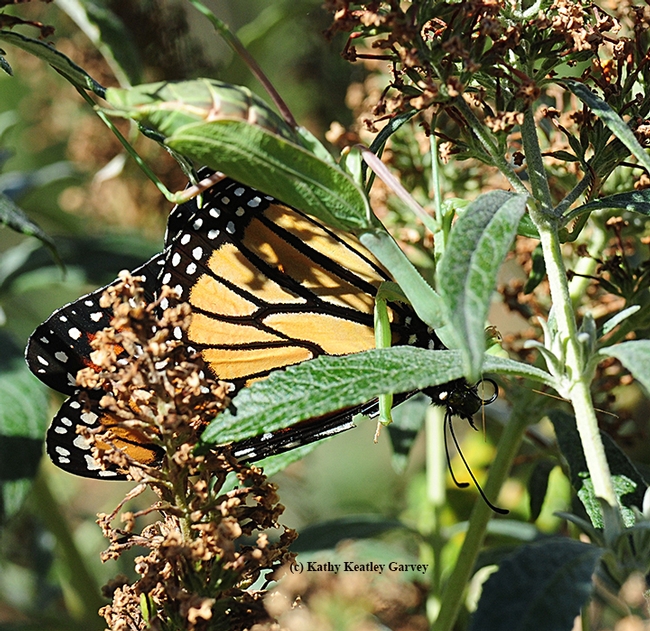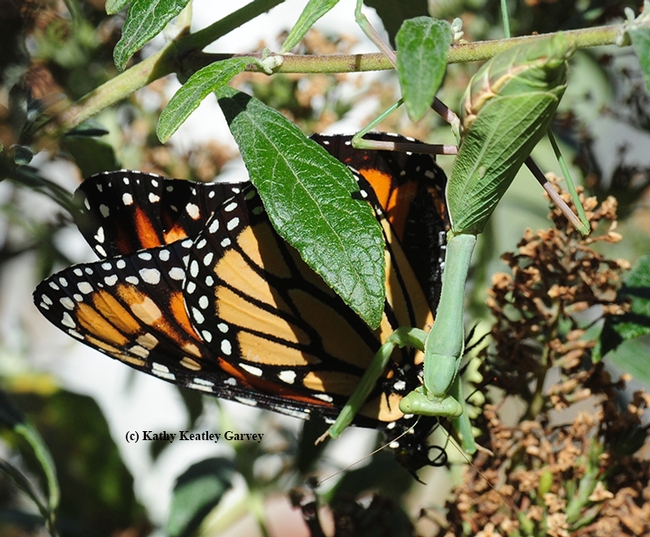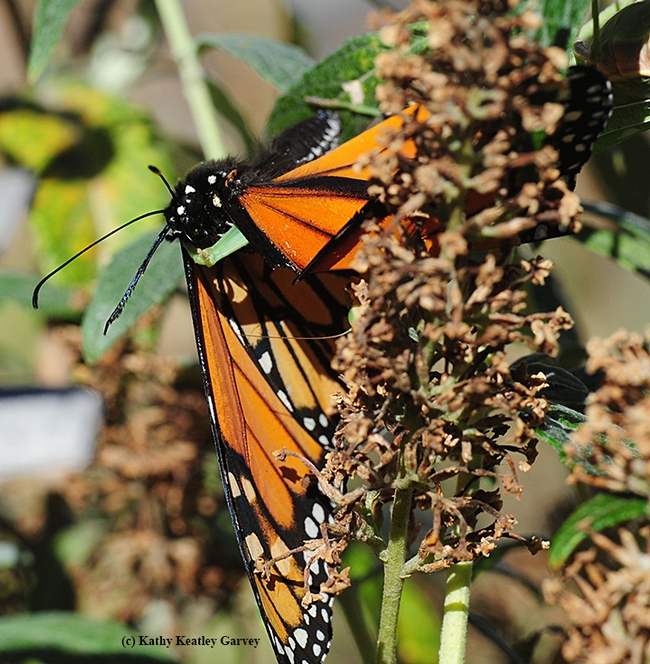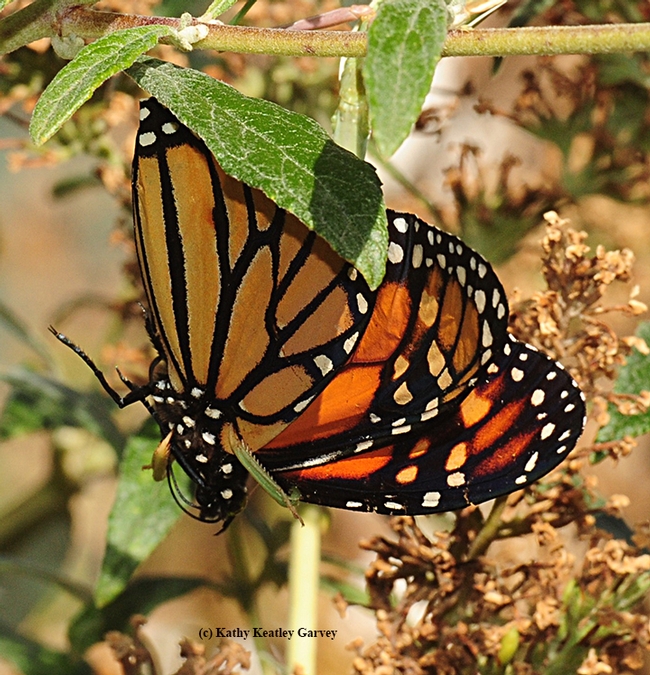If you're rearing monarchs or offering them a “way station” of nectar-producing flowers in your yard, there's one thing you don't want to see: A praying mantis nailing a monarch.
That's when the "pollinator friendly garden" seems more like a "predator friendly garden." It's not by chance. It's by choice. Like bank robbers who go where the money is, mantids go where the food is. Unfortunately for those of us who favor pollinators over predators, they patiently wait for bee breakfast and butterfly brunch. And they're as cunning as they are quick.
It's an insect-eat-insect world out there.
It is Oct. 23, a bright, breezy autumn day. Pacific Northwest monarchs are migrating to their overwintering sites in Santa Cruz and Pacific Grove and are fluttering down to nectar on Mexican sunflower (Tithonia), butterfly bush (Buddleia), and Lantana. Flight fuel.
But wait! There's a monarch on the butterfly bush that isn't moving. Why is she not moving? Oh, she's struggling. Oh, she's in the clutches of a praying mantis.
The mantis is perfectly camouflaged amid the green vegetation. She is gravid and an ootheca is in her future. Her bloated abdomen wiggles like the leaf she resembles, Her spiked forelegs, like thorny rose stems, circle her prey. Oh, she's piercing a wing...
This migratory monarch won't be joining her buddies in Santa Cruz.
Final score: Mantis, 1; Monarch, 0.
Attached Images:

A gravid praying mantis, her abdomen bloated, grabs a migrating monarch nectaring on a butterfly bush. (Photo by Kathy Keatley Garvey)

The praying mantis, perfectly camouflaged, resembles a leaf. (Photo by Kathy Keatley Garvey)

A spiked foreleg circles the monarch's thorax. (Photo by Kathy Keatley Garvey)

The spiked foreleg pierces a wing. (Photo by Kathy Keatley Garvey)